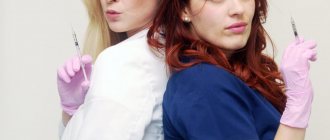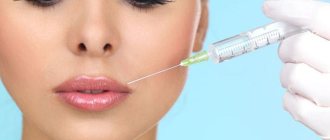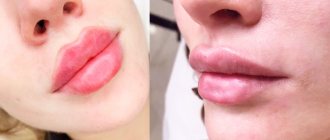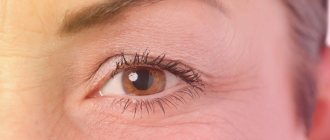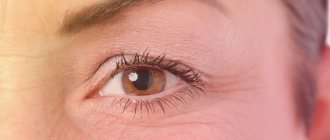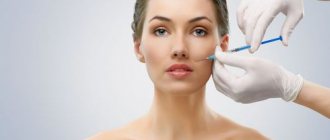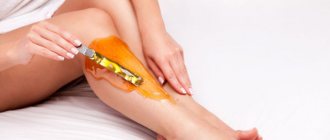Botox injections into the face are fraught with many ugly complications: severe swelling, ptosis of the upper eyelids up to the complete inability to open the eyes, terrible grimaces like a crooked mouth or ominous “Mephistopheles eyebrows” (with the outer edges raised upward). Having discovered a creepy mask or “balloon” in the mirror instead of a face, victims of botulinum poison are feverishly looking for an answer to the question of how to remove Botox. Let’s say right away: you won’t be able to completely get rid of the poison! It is only possible to speed up the process of its removal from the body. We tell you how to do this.
What is Botox
Botox is a drug based on botulinum toxin, the strongest natural poison known to science. It is also called sausage poison (a direct translation of its original name Botulinum toxin), as it was discovered as the causative agent of fatal food poisoning from spoiled sausage. Then they learned to produce botulinum toxin on an industrial scale for military purposes as a bacteriological weapon (4 kilograms of this poison can destroy all of humanity) and for the treatment of various neuromuscular disorders.
Botulinum toxin is a powerful neuroparalytic poison. It paralyzes the transmission of nerve impulses to the muscles, causing them to atrophy. In medicine and cosmetology, this neurotoxin is used in low concentrations to have a neuroparalytic effect locally. For aesthetic purposes, botulinum toxin is most often used to smooth out wrinkles by paralyzing the target muscles. The muscles do not contract - wrinkles do not form.
But even in microdoses, Botox remains poisonous. It gives both external ugly side effects and health complications, including suffocation and anaphylactic shock. Not only the injection areas suffer, but also neighboring areas and even the entire body. The fact is that the toxin has diffusion properties, that is, it spreads beyond the target zones.
Lifestyle after the procedure
The strictest recommendations for the first 3 days after the session:
- Avoid alcoholic drinks: ethyl alcohol increases blood flow to the face.
- Do not take hot baths or go to the sauna.
- Avoid visiting the beach and solarium.
- Protect your face from direct sunlight.
- Avoid even minimal physical activity.
- Do not take muscle relaxants, tetracycline antibiotics, or B vitamins.
- Do not massage the injection area.
Why do patients want Botox removed?
A person simply may not be ready for the new facial sensations that Botox victims have to put up with. The muscles become stiff, the cosmetology patient feels numbness in the face, and facial expressions become unnatural. I would like to return to my usual comfortable state as soon as possible.
Also, the patient may not be satisfied with the ugly aesthetic consequences and complications. Cosmetologists themselves admit that the botulinum therapy procedure may be unsuccessful. This supposedly only happens 5% of the time. But these are controversial statistics, apparently reflecting only a certain degree of severity of cases. After all, such side effects from Botox as headache, swelling, bumps, bruises, hematomas, ptosis (drooping tissue, drooping of the forehead over the eyebrows) are ubiquitous phenomena, which the client is warned about as manifestations of the norm. It is clear that not everyone will be ready to endure ugly and painful bumps above the eyebrows or swollen eyes.
The causes of more serious complications are associated with the procedure itself (neurotoxin paralyzes nervous activity), errors of cosmetologists (overdose, violation of technique, poor-quality drug), characteristics of the body (non-standard location of the facial nerve, hernias and injuries, individual reaction to botulinum toxin and auxiliary substances).
What complications could these be:
- Ptosis (sagging) of the upper eyelid, inability to open the eye.
- Eyebrows that fall over the eyes like a visor or are raised menacingly with their outer edges (“Spock’s look,” named after the character in the Star Trek television series).
- Curved, unruly lips (drooping of one corner of the mouth) and uncontrollable drooling.
- Swallowing, speech, blinking problems
- Strabismus, diplopia (double vision) and other visual impairments.
More severe complications that are life-threatening and require emergency medical attention may also occur.
Preparing for the session
Before a botulinum therapy session, careful preparation is required:
- do not drink alcohol the day before the session;
- 3 days in advance – stop taking antibiotics;
- a week before - stop taking medications that reduce blood clotting;
- on the day of the procedure - do not play sports, do not visit a massage therapist, do not swim or tilt your head for a long time, do not apply cream to your facial skin.
Foods high in salt and spices retain water in the body. This diet leads to swelling. If you are planning Botox injections, you should avoid salty and spicy foods.
Botulinum toxin can manifest itself in unexpected ways, therefore, if the patient has never attended such procedures, allergy tests are required. Botox is not a hypoallergenic drug; an allergic reaction may occur.
Removing botulinum toxin naturally
According to experts, botulinum toxin is eliminated from the body by the kidneys after one month.
But Botox, fused with tissue fluids, remains in the body much longer. The effect of botulinum therapy lasts on average 3-5 months. Manufacturers of some drugs promise that the effect lasts up to 9 months. Much depends on the body’s sensitivity to botulinum toxin and the stage of addiction to the drug. There are also those for whom the effect lasts for 1-2 months, or for whom the drug “does not take effect” at all.
What determines the duration of action of botulinum toxin:
- following the rules after the procedure (not allowed: alcohol, a lot of liquids and salty foods, ultraviolet radiation, massage, sports, cosmetics, baths and saunas),
- metabolic rate,
- immunity,
- gender (women take longer to eliminate the toxin than men),
- age (with age it takes longer to eliminate the toxin),
- weight,
- injection area (the thinner the skin and more mobile the muscles, the faster the effect of the drug stops),
- dose,
- frequency of procedures (the more often the procedure is done, the lower the effectiveness will be).
Medication methods
You need to know that removing Botox from the body with medications is effective in the first time after injections , in contrast to physical procedures, which are used after several weeks. The action of these drugs is based on thinning the blood; accordingly, Botox will be more actively eroded and removed from the body. This:
- antibiotics;
- anticoagulants;
- hormonal drugs;
- any herbal tinctures in alcohol.
You cannot prescribe them yourself, so as not to cause additional harm to your health.
How to artificially remove the effect of botulinum toxin
It is impossible to completely neutralize the effect of botulinum toxin. It is realistic to only speed up the process of removing poison from the body
Cosmetologists have an excellent solution on how to remove the effects of Botox. We need to seek help... cosmetologists, of course. With the help of salon procedures, it is proposed to accelerate the restoration of nerve impulses, muscle tone, metabolism, and local blood flow.
What cosmetologists offer:
- microcurrent therapy,
- magnetotherapy,
- ultrasound therapy,
- hardware massage.
This is such a strong friendship between a cosmetologist and a client: inject botulinum poison and then displace it from the dermis with current, magnet, vacuum, ions.
Carefully! Procedures to accelerate the removal of botulinum toxin cannot be done in the first 2-3 weeks after the injection. They, on the contrary, will enhance the effect of the poison, as they activate its diffusion with tissues.
If Botox needs to be removed from the body urgently, you will have to resort to medication. Doctors usually prescribe medications to thin the blood: hormones, anticoagulants, antibiotics.
Indications
Complications often occur for a reason. Typically due to:
- Failure to comply with the recommendations of the treating specialist during the rehabilitation period.
- Incorrect dosage.
- Medical illiteracy
- Incorrect drug injection site.
- Overdose of a harmful substance.
- Using a low quality drug.
Indications for removing the active component:
- asymmetry of zones. Cause: excessive raising of the brow arches;
- diffusion of drugs;
- increased level of lacrimation, severe dryness of the mucous membrane of the eyeballs. Additionally: rapid deterioration of visual acuity;
- ptosis. Result: significant drooping of the upper eyelids;
- increased level of salivation. Additionally: dysfunction of the speech apparatus.
Help: correctly diagnose the cause that resulted from the formation of consequences. Action: quickly correct the situation, determine methods for removing the component from the patient’s body.
How to remove Botox at home
When a patient injects Botox, he is told what not to do in order to prolong the effect of the procedure. For example, you cannot take baths and saunas, do massages, or play sports. The point is to have less activity, blood flow and metabolism not to accelerate, and the active substance to remain in the body longer.
Now let's talk. If the goal is not to delay, but to remove the poison from the body as quickly as possible, what should be done? Absolutely right: break the rules that the cosmetologist spoke about in order to speed up your metabolism. But all this must be done competently, in moderation, and after a certain time after the procedure, so as not to aggravate complications or cause new ones.
Where to begin:
- Self-massage of the face.
Using light pressure, we run our fingers along the massage lines of the face from the center towards the temples, ears and outer corners of the jaws. - Vacuum massage.
Available not only in salons. It can be easily done at home using Beauty 365 vacuum MIRACLE jars (sold in the online store www.beauty365.ru). They increase blood flow, local metabolism in tissues and stimulate lymph outflow. - Physical exercise.
The minimum is charging. The best option is a balanced set of exercises aimed at improving blood circulation and lymph flow, accelerating metabolism, and returning healthy muscle tone. - Static gymnastics.
Just lie for 5 minutes a day on a roller rolled up from a towel or purchased from the online store www.beauty365.ru. Can you imagine how many things have become constricted and disrupted in the functioning of your body due to the fact that one muscle has “relaxed” (paralyzed)! Spasms and tension must be removed, the muscular system must be brought into healthy tone, and obstacles to normal blood circulation and lymphatic drainage must be removed. - Sauna or bathhouse.
Give yourself a bath day at least once a week. What do people say there? Does a bath drive any disease out of the body? Translated into scientific language: high temperature will increase blood supply to tissues and lymph and accelerate the removal of toxins.
Can I withdraw it quickly?
Reason: lack of result. Kinds:
- regular massages and treatments. Principle: gentle massage, high intensity. Result: impact on epidermal cells, restoration of the muscle layer. Recommendations: lymphatic drainage;
- physiotherapy. The principle is based on stimulation of damaged muscles with minimal current pulses. Help: Darsonval and myostimulation are prescribed. Effect: rapid increase in muscle performance, improved blood circulation in the subcutaneous tissue. Consequences: rapid withdrawal of the active component;
- physical exercise.
- Additionally: aerobics class. Action: regular performance of gymnastic exercises – facelifting. Result: impact on the drug injection sites. Tip: regularly turn your head to the sides.
What are the consequences of ptosis of the upper eyelid?
Drooping of the eyelid as a result of an unsuccessful Botox injection is accompanied by unpleasant symptoms. Among them:
- Pronounced facial asymmetry, resulting from significantly different sizes of the palpebral fissures. In addition to the eyelid, sometimes one of the eyebrows droops, which makes the asymmetry even more noticeable.
- Problems with cleaning and moistening the eyeball, resulting from the inability to blink. In some cases, this causes chronic eye irritation.
- Difficulty trying to close the eyes completely, caused by loss of muscle control. Because of this, the visual organs are in constant tension, quickly get tired, and heaviness is felt in the frontal region. To look at objects, you have to tilt your head back, this provokes poor circulation and headaches.
- Problems with the drainage of tear fluid, causing tears to constantly flow from the eye.
If not only the lifting eyelid muscles are damaged, but also the oculomotor muscles, then, in addition to eyelid ptosis, strabismus and decreased visual acuity may occur.
All of these side effects are rare. However, even one of them is enough to worsen the quality of life and increase the level of discomfort.



